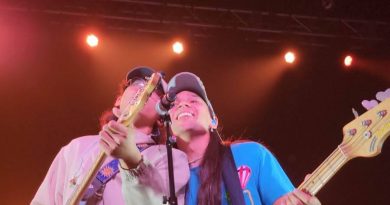Opinion: What Tragedy Took, and What Joanne Epps Left Behind
Follow WHIP Twitter Facebook Instagram
WRITTEN BY: Jadon George
PHOTO BY: Pablo Rouco
Oh, my God. I can’t tell you how many times those words flew through the halls of Temple University on Tuesday afternoon.
In the minutes after we found out that the university’s acting president, Joanne Epps, was dead, the primary reaction of students, staff, and faculty alike was shock. Epps had given the majority of her 72 years on earth to the service of our law school and the wider university. Most famously, Epps held a pair of leadership positions — law school dean from 2008 to 2016, provost from 2016 to 2021 — before becoming our interim figurehead in April. She’d just become Temple’s acting president in April. Her promotion, carrying a promise of stability, interrupted two years of official tumult and on-campus tragedy. How could this happen to Joanne Epps? And how could it happen now?
Many of us, if we had a resume like President Epps’s, would wrap our identities in a blanket of all we’d done and all we’d had to overcome to do it. But Epps was famous for something else entirely: Hurricanes of love, respect, and admiration seemed to form above Epps wherever she set up shop.
“All of us were drawn to her warmth,” said Richard Englert, who served as Temple’s president from 2016 to 2021 after three months in the interim role, “and because she truly cared.” In public statements and private intimations, that sounded like the consensus.
Englert made that comment at a vigil held in Epps’s honor on Wednesday at noon, beneath Temple’s Bell Tower. The presiding speaker — the master of ceremonies, if you will — was David W. Brown, an assistant dean at the Klein College of Media and Communications, and several other major players at Temple also took the stage. But they weren’t alone: Hundreds, if not thousands, of onlookers thronged the Tower to pay their respects. At first, I thought that the hundreds of people who’d gathered to mourn were spectators, drawn to the makeshift stage by the tragic news and the pall it’s cast over this school’s fate. And then, I started to actually talk to the people who were there. It seemed everyone had a story of President Epps’s goodness.
Tony Watlington, Philadelphia’s superintendent of schools, said he couldn’t believe this university’s leader had passed away — Epps had just been talking to him, “two or three weeks ago,” about ways to open Temple up to local students. At first, he struggled to sum it all up: “She was such a warm, caring…” Watlington began. Then, he found it — Epps was “…a different kind of leader.” He continued, “She made you feel like you had her undivided attention when you were in her presence.”
Gabe Bernstein, a junior at the College of Science and Technology, insisted that he didn’t personally know our fallen president. His father, a Temple law graduate, once had Epps as a professor — but Bernstein himself said that he’d only known her as an administrator. Before our conversation ended, though, he revealed that he, too, had an Epps story. It happened when he was walking down Broad with his mates in the university’s marching band: “Once, as we were cadencing, we ran into her,” he said, “and she took the time to thank every individual person in the band.”
When Temple University’s graduate students went on strike in the spring, the strikers and their allies often felt ignored and disrespected by university leadership. But when faculty, feeling shut out at every turn, launched a no-confidence campaign against some of Temple’s leaders, it was Epps who met with the faculty union in March and assured them that administration would take their concerns seriously. Epps hadn’t even become president yet, but she took upon herself to make the faculty feel seen and heard.
Karen M. Turner, a longtime professor of journalism, wondered if the tragedy had snuffed out “a light at the end of the tunnel” for the university. “I think we were hopeful,” she said. “Hopeful that we would get a president like Joanne.”
Marylouise Esten, Epps’s chief of staff, had earned monikers as the president’s “right hand” and “sister” from the current provost, Gregory Mandel. It was Esten who summed up all of Epps’s reputation in the space of a single story.
“Once, she told me that when she was small, she didn’t know how to be a friend,” Esten recalled from the stage at the memorial. “Her mother had to teach her.
“I find that impossible to believe.”
News pieces aren’t supposed to be filled with wall-to-wall praise. They’re supposed to respect, review, and relay both sides of every story. They’re designed to look at events, even this one, through the lens of objectivity. And when we write them, our high calling is to abandon our inclinations and minimize our entanglements so we’re free to chase the truth — wherever it leads. But here, the truth has led us only to one place: Joanne Epps’s kindness, brilliance, and humility are the stuff of legend.
If we ever find another side to that story, we’ll let you know. Don’t hold your breath.
–
A previous version of this story misidentified the individual pictured next to David W. Brown and has since been corrected.
Pablo Rouco is the News Director at WHIP Radio. He also serves as podcast editor at The Temple News.
Jadon George is the Assistant News Director at WHIP Radio.



